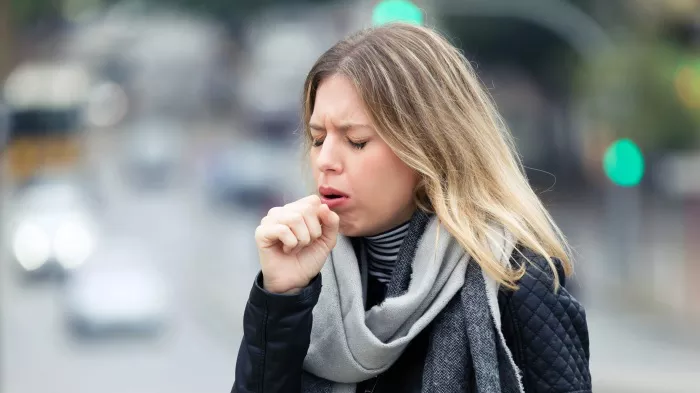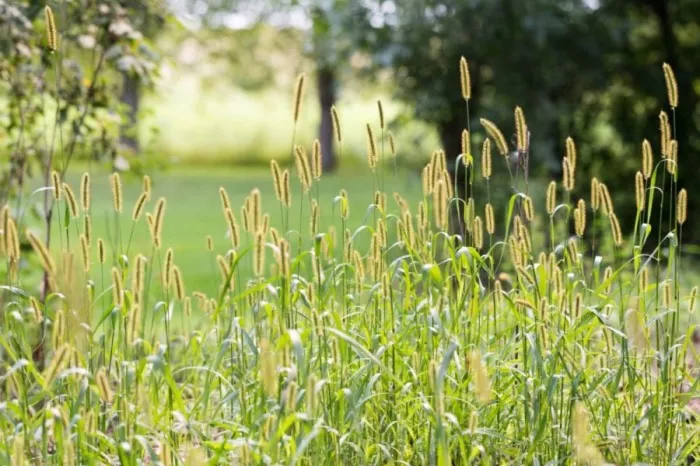Grass allergy, also known as hay fever or allergic rhinitis, is a common allergic reaction triggered by the exposure to grass pollen. This condition affects a significant portion of the population, causing discomfort and disrupting daily activities. In this comprehensive exploration, we delve into the intricacies of grass allergy, shedding light on its causes, symptoms, and various treatment options.
I. The Basics of Grass Allergy
Grass allergy, classified as a type of seasonal allergic rhinitis, is primarily caused by an immune system response to proteins found in grass pollen. As grasses release pollen into the air during specific times of the year, susceptible individuals may experience a range of symptoms, varying from mild to severe.
II. Types of Grasses and Their Pollens
Not all grasses contribute equally to grass allergy, as various species release distinct types of pollen. Identifying the prevalent grasses in a specific geographical region can aid in predicting peak allergy seasons. The major grass species associated with grass pollen allergies include Timothy grass, Bermuda grass, Kentucky bluegrass, and Ryegrass.
III. Causes and Risk Factors
Understanding the causes and risk factors of grass allergy is crucial for identifying susceptible individuals and implementing targeted preventive measures. The primary cause of grass allergy lies in the immune system’s response to proteins found in grass pollen. However, several factors contribute to the development and exacerbation of this allergic reaction:
Genetic Predisposition: Individuals with a family history of allergies, including hay fever, asthma, or eczema, are more likely to develop grass allergy. Genetic factors play a significant role in determining an individual’s immune system response to allergens.
Environmental Exposure: Prolonged exposure to grass pollen increases the risk of developing an allergic reaction. People residing in areas with high concentrations of grasses or those with frequent outdoor activities during peak pollen seasons are more susceptible to grass allergy.
Early Childhood Exposures: Childhood exposure to allergens, including grass pollen, can influence the development of allergies later in life. Environmental factors during early childhood play a crucial role in shaping the immune system’s response to potential allergens.
Air Pollution and Tobacco Smoke: Environmental factors such as air pollution and exposure to tobacco smoke have been linked to an increased risk of allergies, including grass allergy. Polluted air can exacerbate the severity of symptoms and contribute to the development of respiratory issues.
Immune System Dysfunction: Individuals with compromised immune systems or autoimmune disorders may be more prone to developing allergies. An imbalance in immune system regulation can lead to an exaggerated response to harmless substances like grass pollen.
Occupational Exposure: Certain occupations, such as landscaping and agriculture, may involve regular contact with grasses and their pollen. This occupational exposure can elevate the risk of developing grass allergy among susceptible individuals.
IV. Signs and Symptoms of Grass Allergy
Recognizing the signs and symptoms of grass allergy is essential for early diagnosis and effective management. The symptoms can vary in intensity and may include a combination of the following:
Sneezing: Frequent and repetitive sneezing is a common early symptom of grass allergy. It is the body’s reflexive response to clear the nasal passages from irritants like grass pollen.
Nasal Congestion: Individuals with grass allergy often experience nasal congestion or a stuffy nose. This occurs due to inflammation of the nasal passages in response to the immune system’s reaction to grass pollen.
Runny or Itchy Nose: Excessive nasal discharge, commonly referred to as a runny nose, is another hallmark symptom. Itchy sensations in the nose may also be present, leading to frequent rubbing or itching.
Itchy or Watery Eyes: Grass allergy commonly affects the eyes, causing itching, redness, and excessive tearing. These ocular symptoms can significantly impact visual comfort and overall well-being.
Throat Irritation: Postnasal drip, a result of excess mucus production, can lead to throat irritation and a persistent cough. This symptom is often a secondary effect of the nasal and respiratory responses to grass pollen.
Fatigue: Persistent exposure to grass pollen and the resulting allergic reactions can lead to fatigue. Individuals with grass allergy may experience reduced energy levels, impacting their overall daily functioning.
Difficulty Concentrating: The combination of allergy symptoms, especially nasal congestion and fatigue, can hinder cognitive function and concentration. This can be particularly challenging for students or individuals engaged in mentally demanding tasks.
Sleep Disturbances: Grass allergy can disrupt sleep patterns, leading to difficulty falling asleep or staying asleep. Nasal congestion and discomfort contribute to sleep disturbances, affecting the overall quality of rest.
Exacerbation of Asthma Symptoms: Individuals with coexisting asthma may experience worsening asthma symptoms during grass allergy season. This can include increased coughing, wheezing, and shortness of breath.
VI. Strategies for Prevention
Preventing and mitigating the impact of grass allergy involves a multifaceted approach that combines environmental awareness, lifestyle adjustments, and proactive measures. By adopting these strategies, individuals can minimize their exposure to grass pollen and, consequently, reduce the frequency and severity of allergy symptoms.
Monitor Pollen Counts:
Regularly checking pollen counts in your local area can be instrumental in planning outdoor activities. Weather forecasts often include pollen forecasts, providing valuable information about the expected pollen levels. During high pollen seasons, individuals with grass allergy can adjust their plans, opting for indoor activities on days when pollen counts are elevated.
Stay Indoors During Peak Pollen Seasons:
Understanding the peak seasons for grass pollen in your region allows for strategic planning. Typically, grass pollen levels are higher during late spring and early summer. Staying indoors during these peak seasons, particularly on windy days when pollen is more likely to be airborne, can significantly reduce exposure and alleviate symptoms.
Use Air Purifiers:
Indoor air purifiers equipped with HEPA filters can effectively capture airborne pollen particles, providing relief for individuals with grass allergy. Placing air purifiers in commonly used living spaces, especially bedrooms, creates pollen-free zones, allowing for better sleep and reduced exposure during vulnerable moments.
Keep Windows Closed:
While fresh air is essential, keeping windows closed during high pollen seasons can be beneficial. This prevents outdoor pollen from entering living spaces and exacerbating allergy symptoms. When using air conditioning, ensure the filters are clean and in good condition to enhance their effectiveness in trapping airborne allergens.
Conclusion
In conclusion, grasping the complexities of grass allergy involves delving into its origins, causes, and varied manifestations. From the different types of grasses and their pollens to the intricacies of diagnosis, treatment, and lifestyle modifications, this comprehensive exploration equips individuals with the knowledge needed to navigate the challenges posed by grass allergy. By fostering a deeper understanding of this prevalent allergic condition, we pave the way for more informed decisions, enhanced preventive measures, and improved overall well-being for those affected by grass allergy.
[inline_related_posts title=”You Might Be Interested In” title_align=”left” style=”list” number=”6″ align=”none” ids=”5788,5778,5401″ by=”categories” orderby=”rand” order=”DESC” hide_thumb=”no” thumb_right=”no” views=”no” date=”yes” grid_columns=”2″ post_type=”” tax=””]































